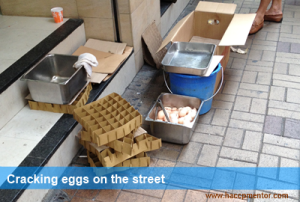HACCP Mentor Week in Review – Episode 35
Welcome to Episode 35 of HACCP Mentor Review. I am Amanda Evans and in this episode we discuss waste and bi-products, the cleanliness of your steam, critical limit validation references and how to monitor you suppliers performance. I apologise for the lack of video and podcast this episode. My body has succumbed to the shock of having to come back to work after my recent travels and I have partially lost my voice due to a spring cold. I will be back on track next episode.
Waste and Bi-products
Depending on your food business category, you may or may not generate waste or bi-products. I don’t mean waste as in rubbish (that is not fit to be further processed) but waste and bi-products that can and does get used in further processing. This may include waste and bi-products that end up as an input into say animal feed or stale bread that goes to make breadcrumbs. Just like having a good understanding and ability to trace your raw materials within your own process, knowing where your waste product and bi-products ends up is also just as important. If you are ever required to recall one of your food products you will need to know your waste and bi-product distribution as well.
Action of the Week
This week check that the critical limits that you have documented in your HACCP Plan have been validated with up-to-date reference sources. You may have used a regulatory or theoretical validation reference that has been updated in the past 12 months.
If you need help with reviewing your critical limits or HACCP plan check out my HACCP Manual Review Pack.
How do you monitor supplier performance?
Your approved supplier program and systems is considered one of the most important parts of your HACCP food safety system. I always say, you can’t make good product from poor raw materials. This goes for both food safety and food quality. So based on this, checking or monitoring the performance of your suppliers is a priority. Here are my top 3 supplier monitoring activities:
(1) At the point of Receival – checking that the actual raw material conforms to your acceptance criteria and any food safety legal requirements. You may use a checklist to record this type of monitoring. Things like product temperature, packaging integrity and contamination, product expiry / shelf life, delivery vehicle suitability and potential for cross-contamination are basic checks to be undertaken. Some food businesses may also undertake their own microbiological testing prior to acceptance.
(2) During production – assess if the raw material performs as intended and as agreed. For example, do ingredients mix well, does packaging form as required on your packing machine. Is there any foreign matter present or other quality issues? Are you achieving your finished product shelf life based on the shelf life of the raw materials?
(3) General business dealings – Basic business communications can be monitored through asking the following questions:
- Are they third-party certified to an applicable recognised standard? If they are, there should be no problems getting information like product specification sheets, verification results on finished product (eg. micro, chemical, allergens, product claim testing results).
- Are you getting what you ordered? If they constantly get your order quantity incorrect, what else are they getting wrong in their business.
- How quickly do they respond to any customer complaints that you make? Do you just get a standard reply (or credit) or do you actually get advisory of corrective action taken and root cause analysis?
There are many other ways that you can monitor supplier performance. Leave a comment below this episode to share your activities with other people.
How clean is your steam?
Any ‘steam’ that you use as part of your food manufacturing process is required to be safe. So just like air and water, you need to verify the safety and quality on a regular basis. Some may think that just testing the water safety is sufficient as this is what steam is made from, however you need to test the actual steam as well. The main reason is you are also checking to see if the steam delivery system ie. Pipes, hoses, nozzles is safe.
Feedback
Well that wraps up another episode of HACCP Mentor Review. Don’t forget to share with others how you monitor the performance of your suppliers by leaving a comment below. Until next time, I am Amanda Evans from HACCP Mentor – have a great week.



